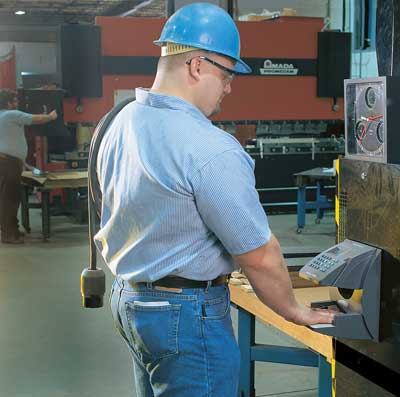 Nowadays it seems the amount of compliance requirements organisations must follow could almost sink a ship. With endless tick-box exercises and audits it can be easy to lose sight of their actual purpose. Health and Safety is one such case. However, at its core, organisations (whether private or public) owe a duty of care to their staff which covers the environment in which they work, the duties they carry out, the hours they work and the tools they use to conduct their duties.
Nowadays it seems the amount of compliance requirements organisations must follow could almost sink a ship. With endless tick-box exercises and audits it can be easy to lose sight of their actual purpose. Health and Safety is one such case. However, at its core, organisations (whether private or public) owe a duty of care to their staff which covers the environment in which they work, the duties they carry out, the hours they work and the tools they use to conduct their duties.
Inadequate equipment, a poor environment and fatigue through long hours can all affect quality, cause accidents, absences and, in serious cases, lead to reputational damage, legal action and loss of revenue. If care of your staff doesn’t grab your attention, then the potential costs certainly will.
Two of the world’s biggest disasters, Chernobyl the Exxon Valdez oil spill, were caused by human error linked to fatigue. An accident in your organisation may not end up polluting the world, but it could put you out of business.
Many organisations regard Health and Safety as simply a compliance issue, a burdensome admin job that someone needs to do, when in fact Health and Safety when done right is a competitive advantage that improves productivity, efficiency and quality as well as staff retention and motivation. Start thinking of it not as a compliance issue but a commercial one and your whole approach changes.
The good news is that technology is readily available to simplify and automate many aspects of Health & Safety, not simply to avoid the manual paperchase but to improve the health, safety and wellbeing of your staff and the competitiveness of your organisation.
Research shows working long hours reduces both productivity and quality: working 60 hours a week does not achieve 50% more than 40 hours a week. Once you factor in the potential for poor quality and accidents, you may not be getting a return for paying for additional hours. Getting hours right has other benefits too: a recent study in Sweden showed that a six-hour working day reduced sickness by 50%.
The latest workforce management solutions enable rosters to be generated that not only meet business demands but also consider suitability of staff, and risk and fatigue. The result is shift patterns that not only meet business requirements and benefit staff but also reduce costs and risks.
Time and attendance systems further enable organisations to manage and monitor worked hours to minimise overtime, and breaks between shifts to prevent staff fatigue. Some solutions also come with roll-call options that can be linked to fire alarms and produce real-time muster reports direct to managers (or printers) in the event of a fire.
One of the reasons HFX developed CloudMuster and MusterPoint (which links to fire alarms and 3G eMusterPoints) was a fire at our office in 2015. As a techntechnology company we knew that a clipboard and pen was not an efficient or accurate way of checking the whereabouts of our staff.

Not all staff work in a building or offices; many (for instance care workers) work remotely and this creates its own set of safety issues, but again there are eSolutions that enable staff to be tracked (via GPS) during working hours for their safety.
Of course, you should never just throw technology at a problem and walk away, but neither should you rely on a clipboard, pen and tick box in the hope that this absolves you or your organisation of responsibility.
Above all, a positive approach to Health and Safety comes with the realisation that everybody wins when staff safety and wellbeing is a core part of the business plan, not an external imposition.

